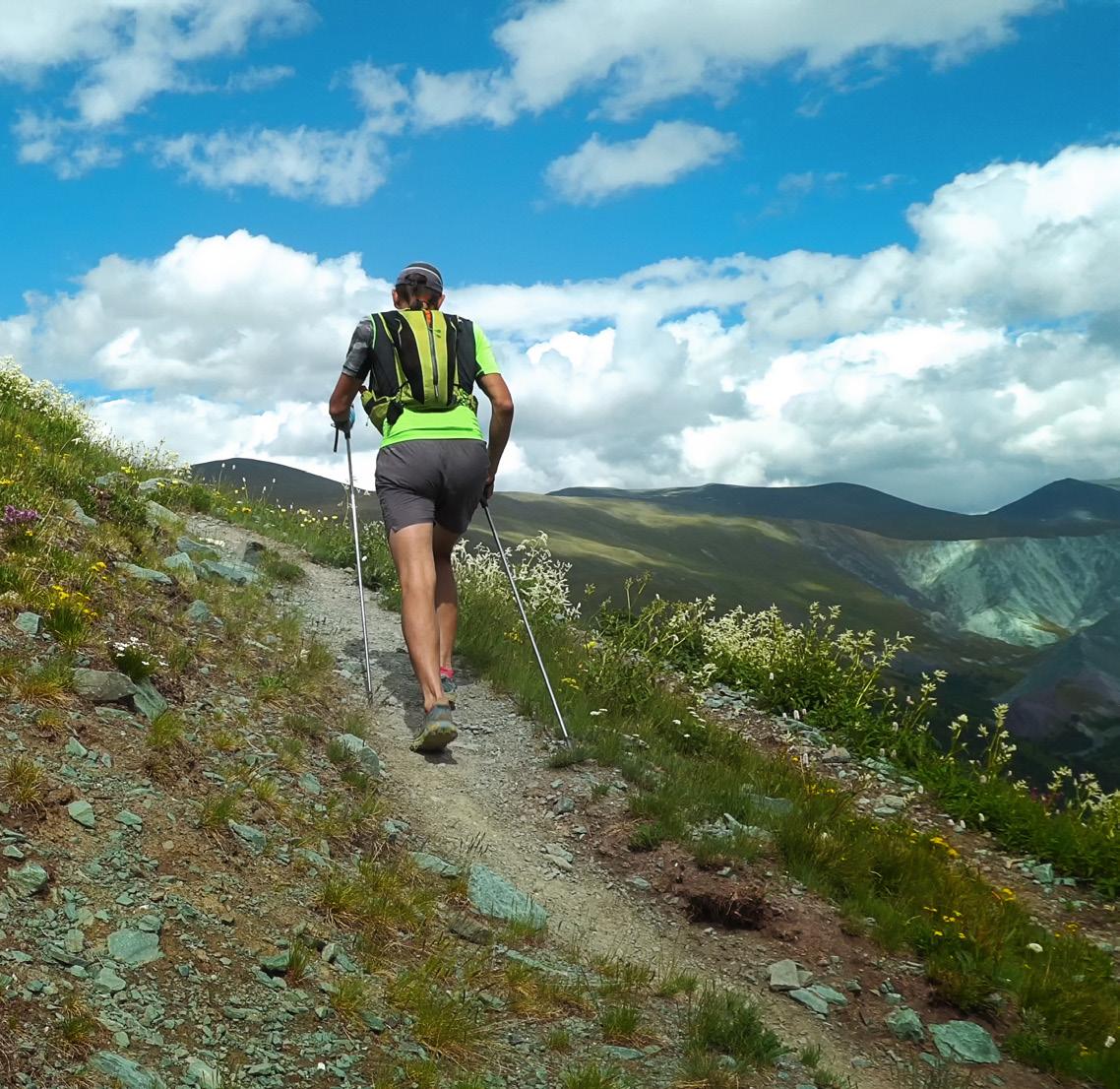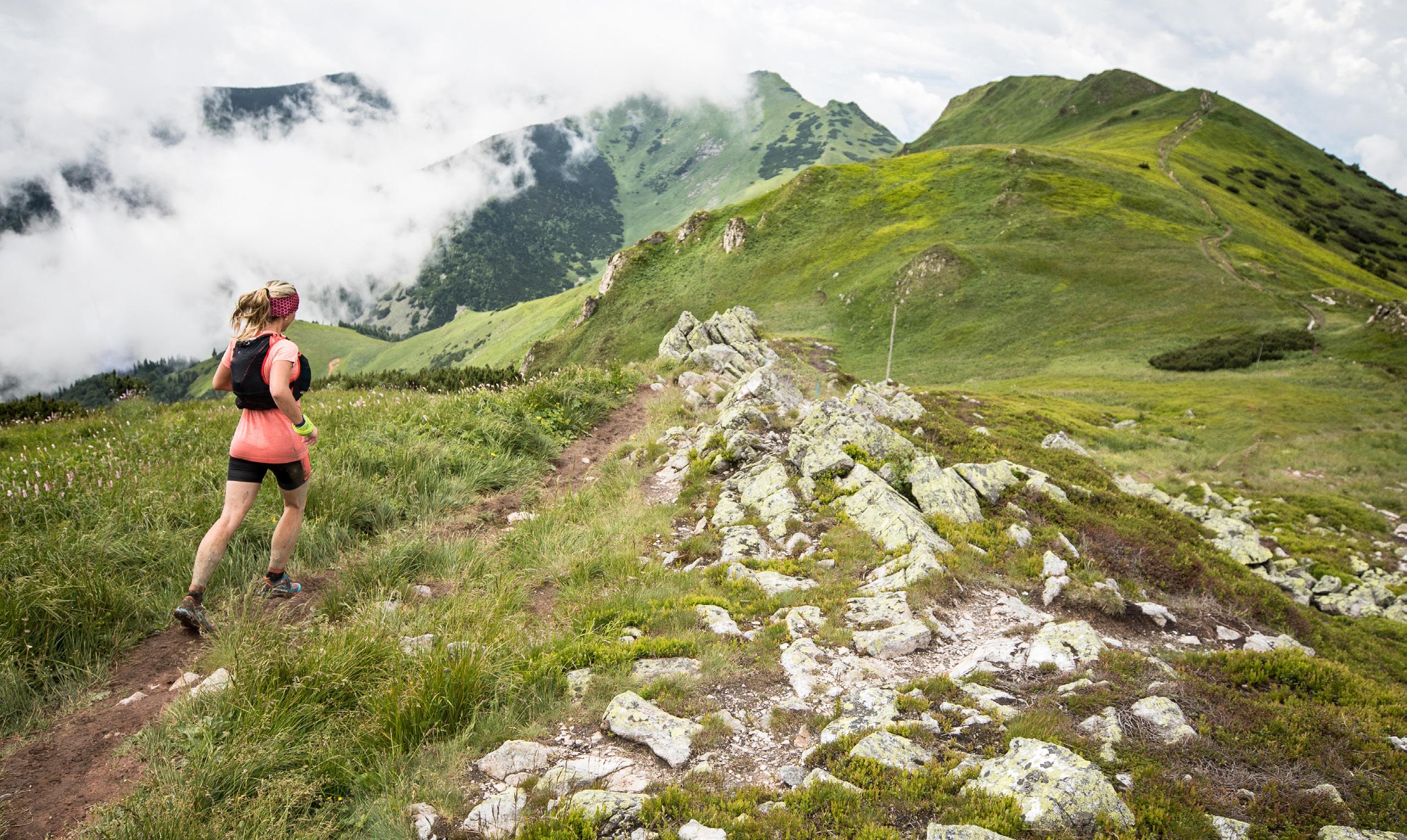Ultrarunning Coach Certification



The UESCA Ultrarunning Coach Certification is the first and only ultrarunning coach certification on the market. Developed in partnership with renowned ultrarunning coach, Jason Koop, this certification is the ultimate resource for anyone seeking to coach ultrarunners.
To the casual observer, training for an ultramarathon is simply a function of increasing the training volume from that of a marathon program. This couldn’t be further from the truth. Whether it be explaining the proper use of poles, how to select a race crew, learning proper descending skills or how to create an effective training program, the ultrarunning certification covers every aspect you’ll need to know to work with ultrarunners.

A graduate of Texas A & M, Jason Koop is the Head Coach for CTS - Ultrarunning. He is the author of ‘Training Essentials for Ultrarunning’ which has become the benchmark book for ultramarathon training. During his coaching career, he has managed over 100 endurance coaches and several hundred athletes of all types, abilities, and sports.
He is also a sought-after speaker and presenter for all topics relating to ultramarathon performance. He is the coach to many of today’s top ultramarathon athletes including Dylan Bowman, Kaci Lickteig, Timothy Olson, Stephanie Violet, Dakota Jones, Kelly Wolf, and many others. An accomplished ultrarunner in his own right, he has finished some of the most difficult races on the planet including the Badwater 135, Hardrock 100, Leadville Trail 100, Wasatch 100, Bear 100, and Western States 100.

Corrine holds a BS in Exercise Physiology from Montana State UniversityBozeman and an MS in Environmental Physiology from Simon Fraser University. Corrine is a former US Biathlon national team athlete and is currently a professional ultrarunner for Adidas-TERREX. Additionally, she is also a coach and science writer. Corrine has combined her love of endurance sports with her research experience in environmental physiology to develop a coaching career focused on working with a wide range of endurance sports athletes.

United Endurance Sports Coaching Academy (UESCA) is the leader in endurance sports coaching education. Established in 2014, the goal of UESCA is to raise the standard of endurance sports education by producing the highest-quality, science-based content via researching the latest and most pertinent research and by selecting top experts across various disciplines to provide content.
Just as important, we strive to provide exceptional customer service and support to those thinking of purchasing a certification, and to our existing coaches.

Unlike other sports certifications that had more research to base content from, research in the ultrarunning space is largely lacking. Due to this, it was imperative to partner with contributors such as Jason Koop and Corrine Malcolm.


Therefore, the development of the Ultrarunning Coach Certification was a culmination of existing running research and data that could be effectively translated to ultrarunning, as well as ultrarunning-specific research and most importantly, evidence-based content provided by our contributors.
In short, you’ll learn everything needed to coach ultrarunners. You’ll learn how the body functions with respect to the musculoskeletal and energy systems, as well as running biomechanics. Using this foundation knowledge, you will learn how to apply it on an individual basis to work with ultrarunners of all levels. And of course, you’ll be educated in areas unique to ultrarunning such as aid station strategy, pacing, descending skills, crew selection, and more!




∞ Introduction
∞ Module 1: Roles of a Coach
∞ Module 2: Skeletal System
∞ Module 3: Muscular System
∞ Module 4: Energy Systems
∞ Module 5: Environmental Physiology
∞ Module 6: Training Benchmarks and Analysis Tools

∞ Module 7: Running Form and Biomechanics
∞ Module 8: Injury and Illness
∞ Module 9: Resistance Training
∞ Module 10: Athlete Intake
∞ Module 11: Goal Setting and Event Selection
∞ Module 12: Training Modalities
∞ Module 13: Training Structure
∞ Module 14: Program Development
∞ Module 15: Pacing
∞ Module 16: Ultrarunning Psychology
∞ Module 17: Nutrition
∞ Module 18 : Safety
∞ Module 19: Shoes – Apparel – Gear
∞ Module 20: Race Preparation and Race Day

UESCA has helped me become a better coach through the well researched and science based information shared through the certifications. The courses provide continuous knowledge through up to date references for all things coaching and business. I will also add their customer service and support is second to none, with a professional and caring staff.
— Laura-Jayne Howard
Great certification - with regularly updated course materials. It gives you a solid foundation on all aspects of your coaching. Highly recommended.
— Tomaz SustarI have taken the running and ultra-running certifications and found them very thorough, science based and clear. Also, the support you receive after being certified is top notch!
— Deborah Schieffer Livingston

∞ Welcome
∞ UESCA Ultrarunning Certification
o Overview
o Certification Structure
o No Tiers
o Certification Principle
o Certification Development
» All Access
» On-Going Resource
∞ The Sport of Ultrarunning
o Background of Running
» Background of Ultrarunning
o Running Events/Distances
o Participation Categories
o Ultrarunning Statistics
∞ Exercise Physiologist
∞ Psychologist
∞ Leader
∞ Motivator
∞ Disciplinarian
∞ Operations Manager
∞ Instructor and Educator
∞ Professional
o Honesty
o Verbal and Physical Actions
o Stay Current o Resource
∞ Effective Communicator
o Email o Phone
o Timeliness
o Sensitivity
o Boundaries
∞ Coaching Fallacies
o You Must Be Fast
o Holding Out Information
∞ Directional Terminology
∞ Skeletal System
o Anterior/Posterior Views
o Landmark Terminology
o Spine
» Neutral Spine
» Lumbar Spine
» Spinal Abnormalities
» Injury
o Pelvis
» Areas of the Pelvis
o Joints
» Types
» ‘Cracking’ Joints
o Foot/Ankle Complex
» Joints
o Genetic Factors
∞ Physiology
o Terminology
o Skeletal Muscle Structure
o Contractile Properties
o Myonuclei and Satellite Cells
o Muscle: Origin and Insertion
o Muscle Fiber Types
o Muscle Fiber Recruitment
o Can Muscles Change Their Type?
o Muscle Hyperplasia vs. Muscle Hypertrophy
o No Pain, No Gain?
o Relationship Between Muscle Fiber Type and Fat Metabolism
∞ Skeletal Muscle Function and Characteristics
o Muscle Memory
o Nerve Innervation
o Connective Tissue
o Fascia
∞ Muscles of the Body
o Anterior View
o Posterior View
o Muscle Classification
o Core Musculature
o Inner Unit Core Musculature
o Upper Body Muscles
o Lower Body Muscles
∞ Intramuscular Performance Factors
o Warm Up
» Stretching vs. Warm-Up: Are They The Same?
» Warm-Up Guidelines?
o Muscle Fatigue/Damage
» Eccentric Muscle Contractions/Delayed Onset Muscle Soreness
» Is a Cool Down Necessary?
» Use of NSAID’s to Counteract DOMS/Musculoskeletal Pain & Injury
o Muscle Burn
» What is Lactic Acid?
o Exercise Associated Exercise Cramps
∞ Muscle Synergy
o Kinetic Linking
o Muscle Imbalances
» Myths
» When are Muscle Imbalances An Issue?
» Doing Two Jobs at the Same Time
» Length/Tension Relationship
» Reduced Muscle Activation
» Muscular Compensation
» Workplace Postural Issues
» Addressing Muscle Imbalances
∞ Equipment-Based Muscle Fatigue
∞ Objectives and Terminology
∞ Circulatory System
o Heart
o Blood Pressure
o Lungs
» Diaphragmatic Breathing
∞ Energy Systems
o Introduction
» Cells
o Phosphagen Energy System
» How is Energy Generated?
o Glycolytic Energy System
» Blood Glucose Regulation
∞ Implications for Ultrarunning
∞ Muscle Glycogen Storage
» Anaerobic Respiration
» Aerobic Respiration
o Oxidative Energy System
» Converting Fat to Energy
» Duration of Energy Systems
∞ Glycolytic and Oxidative Relationship
∞ Intensity-Based Fuel Sources
o Physiological Response to Aerobic Training
o Hypoxic Training
» Blood Doping
∞ Effects of Intense Exercise
o Glycogen Depletion
» Glycogen Depletion Training (GDT)
o Oxygen Debt
o ‘Out of Breath’
∞ Altitude
o Physiology
o Acclimation Guidelines
o Coming From Sea Level
∞ Heat / Humidity
o Physiology
o Acclimation Guidelines and Strategies
» Sauna Protocol
o Dew Point
∞ Cold Weather
∞ Overview
∞ Genetics
∞ Rate of Perceived Exertion (RPE)
o Recommended Assessment for Ultrarunners
o RPE-Based Workout Types
∞ Heart Rate
o Factors Affecting Heart Rate
o Cardiac Drift
o Application for Ultrarunners
» Resting Heart Rate
» Active/Recovery Heart Rate
o Going Too Slow or Too Fast
∞ VO2 Max
o Running Economy
o Application to Ultrarunning
o Relating VO2 Max to Burning Fat/Calories
o Other Reasons Not To Benchmark VO2 Max
» Lactate Threshold
» Reliability
∞ Anaerobic Threshold: Fact or Fiction?
o Benchmarks to Interpret Anaerobic Threshold (AT)
o Conconi Test
o Origin of Anaerobic Threshold
∞ Lactate Threshold
o Historical Reference
o Benchmarking Lactate Threshold
o Blood Lactate Clearance
» Training Implication
o Why Not Directly Test for LT?
o Interpreting LV via the Talk Test
» Integration of RPE
» Test Protocol
∞ Toughness
∞ Analysis Tools
o Hardware Overview
∞ Tracking Metrics
o Most Valuable Metrics
o Assessment Algorithms
∞ Other Technology-Based Assessment Tools
∞ Objectives and Terminology
∞ Gait Phases
∞ Ground Reaction Force
∞ Pronation and Supination
o Role of the Big Toe
o Shoe Implications
o Pronation
o Overpronation
» Flat Feet
» What is a Q-Angle?
o Supination
o Assessing Pronation and Supination
o Pronation is Not Indicative of Pain or Injury
o Knee Valgus
∞ Running Form Components
∞ Hip Extension
o Role of the Glutes
o Application to Ultrarunning
o Relationship Between Ankle Flexibility and Hip Extension
∞ Correct Form
∞ Assessing Form: Treadmill vs. Outdoors
o Benefits and Drawbacks
∞ Passive Movement and Energy Return
o Application to Ultrarunning
o Stretch Shortening Cycle
o Tendons
o Achilles Tendon
» Mechanics
» Outside Influences
o Foot Arch
o Muscles
o Passive Movement
» Training Implications
∞ Allocation of Energy
∞ Rotation Driven Running
o The Spinal Engine
» Spinal Rotation
» Spiral Spring Systems
» Coupled Motion
» How Do The Spring Systems Work?
» Anterior and Posterior Spring Systems
» Arm Motion
» Do The Arms Drive The Legs?
» Range of Motion
» Relationship Between Spinal Rotation and Efficiency
» Application to Ultrarunning
∞ Foot Strike Type
o Heel vs. Midfoot Strike
o Foot Strike Misnomers
o Drills
o Converting To Midfoot Form
» Should I Convert an Athlete To a Midfoot Strike?
o Relationship Between Foot Strike Type and Speed
∞ Stride Length and Rate
o Argument Against Changing Stride Length/Type
o Correlation Between Stride Rate and Strike Length
o Stride Length
o Stride Rate
» Application to Ultrarunning
o Vertical Oscillation
» Application to Ultrarunning
∞ Overview and Terminology
∞ Injury
o Scope of Practice
o Emergency Scenarios
» Inhaler Use
o Injury Prevalence and Location
» Benchmarking Injury Data
» Anatomical Factors
» Is Running Hard On The Knees?
o Injury Prevention
» Volume Increases
» What About Cross Training?
» Kinesio Tape
» Icing
» Shoes
o Running Injuries
» What is Tendonitis?
» Iliotibial Band Syndrome (ITBS)
» Patellofemoral Syndrome (PFS)
» Shin Splints
» Rolled’ Ankle
» Hamstring Injury
» Popliteus Injury
» Plantar Fasciitis
» Blisters
» Side Stitch
» Other Running Related Issues
• Bunion
• Morton’s Neuroma
• Sesamoiditis
o Possible Causes of Injury
» Mechanics
» Range of Motion
» Volume
» Not Enough Rest
» Lack of Fitness
» Running Over Your Head
» Short Sighted
» Previously Injured
» Other Factors
o Running Surface
o Response to Injury
» Don’t Fix an Injury – Manage It
o Running Recovery
o Inured While Running
» During Training
» During A Race
∞ Illness
o Terminology
o Is Ultrarunning Hard on the Heart?
o Colds and Flu
» Guidelines
o Environmental-Related Illnesses
» Heat Cramps
» Heat Exhaustion
» Heat Stroke
» Prevention
o Heat Acclimatization
» Integration
» Chasing Marginal Gains
o Hypothermia
o High Altitude
» Poor Man’s Altitude Training
∞ Objectives
∞ Why?
o Opposite Ends of the Spectrum?
o Reasons to Strength Train
» Do It Right Or Not At All
» Programming
o Reasons to Not Strength Train
o See Saw
o Overload Principle
o Muscle Hierarchy
∞ Resistance Training Protocol
o Determining Workout Structure
» Strength-Endurance Continuum
» Other Resistance Training Duration Prescriptions
o Programming
» Progression
» Taper
o Concurrent Training
» Argument For and Against the Integration of Strength Training
∞ Objectives
∞ Why – What – When
∞ Establish the Coaching Process
∞ Athlete Screening
o Health Screening
» PARQ
» HHQ
» Cardiac Screening
» Blood Work
» Keeping It Legal
» Other Testing
• Anthropometric Measurements
o Refer Out
» Athlete Profile
∞ What’s In An Event?
o Distance
o Training Base and Available Training Time
o Athlete Experience and Expectations
o Event Specifics
∞ Altitude
∞ Heat
o Fitness Comes First
o Race Has Meaning
o Basis For Goal Setting
o Sacrifice
∞ Goal Event Identification
o Prerequisites?
o Number of Races
∞ How Often Can An Athlete Race?
o Identify Preparation Events
∞ Racing as Training
o Goal Setting Examples
∞ Registration
∞ Race Day Goal Setting
o Outcome Goals
∞ Risk Management
o Process Goals
o Time Based Goal Setting
∞ Benchmarking
∞ Training Data
o Multiple Race Goal
∞ Objectives
∞ Key Ultrarunning Workout Types
o Integration
o Workout Types
∞ Work to Rest Ratio
∞ Additional Interval Information
∞ Why Do I Have To Run Hard?
∞ High Intensity Training
∞ Cross Training
o Health and Fitness
o Injury Prevention/Intervention
o Mentally Fresh
∞ Integrate Descending/Stability Training?
o Recommended Practices
» Downhill Training
» Ankle Stability
∞ Multiple Workouts Per Day
∞ Programming Intensity
∞ Training Environments
o Treadmill vs. Outdoors
o Why Does Treadmill Running Suck?
∞ Overview
∞ What is the Right Approach?
∞ Objectives
∞ Key Principles
o General Adaptation Syndrome (GAS)
o Least to Most Specific
» Too Risky?
∞ Periodization Models
o Classic Periodization
» Criticisms
o Block Periodization
o Hybrid. Periodization
o Recommended Ultrarunning Periodization Model
» Is There a Case for Classic Periodization?
» Suspension Bridge Analogy
o Summary
∞ Program Adherence
o Missed Training Days
» Good News!
» Vacation/Business Travel
∞ Training Progression
o Demonstrate Progress
o Not Building a House
∞ Training Blocks
o What’s In The Name?
o Creation of Training Blocks
» VO2 Max Block
» Lactate Threshold Block
» Endurance Block
o Training Block Examples
» Scenarios
∞ Other Programming Areas
o Recovery/Easy Runs
» Just Run
» Application to Ultrarunning
o Taper
» Rationale
» Structure and Duration of Taper
» Taper Tantrums
» Non-Goal Races
» Post-Race
» Peaking
o Transition Period
» Off Season?
» Structure
o Races as Training ∞ Overtraining
o Symptoms
o Prevention
o Multiple Factors
o Don’t Train Like a Pro
o Have Fun!
o Rest
» Trial and Error
» Hours, Not Days ∞ Summary
∞ Overview
o Preformatted Plans
o Not An Assembly Line
» Application to UESCA Program Design
∞ Program Structure
∞ Program Design Trends
∞ Recovery
o Easy/Hard Days
o Back to Back Hard Days
o Programming Recovery Weeks
o Sleep
o Post-Race
∞ Common Programming Mistakes
o Your Athletes Are Not You
o Too Much Volume
» Not Linear
o Not Specific
o Not Enough Intensity
o Too Little Time
∞ Training Volume
o Minimum/Maximum Concept
» Volume Isn’t The Sole Determining Factor of Success
o Not All Volume Has The Same Value
» The Singular Long Run
o Time vs. Distance
o Factors That Influence Volume Increases
o The 10% Rule - Fact or Fiction?
» Challenge to the 10% Volume Guideline
∞ Training Considerations
o Body Weight
o Specific Descending Work
o Overnight Runs
o Road Races
o Technical Terrain
o Stage Races
∞ Get With The Program
∞ Prioritization
o Cardiovascular Fitness
o Climbing and Descending
o Nutrition
o Long Runs
o Other Stimuli
∞ Program Creation Overview
o Feasibility Analysis
o Long Range Strategy
o Training Blocks
o Not ‘One and Done’
» Athlete Feedback
o Nothing is Standard
∞ Program Creation Process
o Overview
» Assumptions
» Limiting Factors
o Identify Gal Event/Program Duration
o Training Availability
» Minimum Volume Requirements
» Realistic Programming
o Initial Training Volume
» Volume Increases
∞ No ‘System’
o Create Long Range Strategy
» Program Template
» How Often Can An Athlete Race?
» Recap of Program Design Trends
» Long Range Strategy Build Out
» Mock Program
o Development of Training Blocks
» Key Principles
» The 3:1 Ratio
» Block Within a Block
» Not Too Far Out
» Mock Training Blocks
∞ Summary
∞ Objectives
∞ Overview
o Impact of Glycogen In Relation To Varied Running Speed
∞ Self-Regulation: Mind or Body?
o Fatigue
o Central Governor Model (CGM)
» Key Aspects to CGM
» Challenges to the CGM
» Application
» Discussion
∞ Stick To The Script
o Risk Management
» Risk vs. Reward
∞ Risk-Based Pacing
o Pace Assessment Tools
o Race Plan
» Knowledge of Course
» Training Data
» Goal
∞ Pacing Variables
o Distance
o Experience and Fitness
o Time
o Environmental Factors
» Temperature
» Humidity
» Altitude
o Course Profile/Running Surface
∞ Race Pacing Guidelines
o The Start
o Determining Intensity
» Climbing
∞ Estimated Climbing Time
∞ Determining Climbing Intensity
» Rate of Perceived Exertion Range
∞ Climbing First
» Flat Races
o Run or Walk?
o Break It Up
o Common Pacing Mistakes
» Erratic Intensity
∞ Trying to Make Up Lost Time
∞ Bombing The Descents
» Starting Off Too Fast
» Running Someone Else’s Pace
∞ Summary
∞ Objectives
∞ Terminology
∞ Mental Training Elements
o Mind-Body Connection
∞ Confidence
o Are You Expecting To Fail?
o Performing Under Pressure
∞ Mental Fatigue
o Potential Implication for Ultrarunners
∞ Pain Tolerance vs. Pain Threshold
o Toughness
» How To Develop Toughness
∞ Burnout
∞ Concentration/Focus
∞ Motivation
o Training Logs
o Program Flexibility
o Music
» Application to Ultrarunning
∞ Why Are You Running?
∞ Placebo Effect
∞ Strategies
o Associative and Dissociative
o Other Strategies
∞ Summary
∞ Objectives and Terminology
∞ Introduction
∞ Nutritional Elements
o Fueling The Ultrarunner
» Calorie Consumption
o Carbohydrates
» Rebound Hypoglycemia
» What Is Insulin?
» Low Carbohydrate Diets
∞ Origins and Research
∞ Application to Ultrarunning
» Periodized Nutrition
o Protein
o Fat
o Energy Contribution
o Caffeine
» Use of Caffeine in Ultramarathons
∞ Strategy
∞ Trial and Error
o Micronutrients
» Electrolytes
∞ Physiology of Digestion
o Digestion Process
o Training The Gut
o GI Distress
∞ Developing A Fueling Strategy
» Important Fueling Information
o Eating On The Go
» Food/Flavor Fatigue
» Food Tiers
∞ Hydration
o Roles of Water
o Hydration Strategies
» Advised Strategy
o Hyponatremia
∞ Dehydration
o Relationship Between Carbohydrates and Dehydration
∞ Pre/Post Workout Fueling
o Pre-Workout
» Carbohydrate Loading
o Post-Workout
∞ Ultra-Specific Nutritional Challenges
» Distance Between Aid Stations
» Gear
» Environmental Changes
» Diminished Decision-Making Ability
» Food/Flavor Fatigue
» Ease of Use
o Seek Guidance
∞ Nutritional Supplements
∞ Caution
∞ Practical Applications and Conclusions
∞ Summary
∞ Objectives
∞ Scope of Knowledge and Practice
o Team Approach
∞ Weather
o Temperature
o Rain
∞ An Athlete Is In Charge Of Their Own Safety
∞ Running Safety Issues
∞ Summary
∞ Objectives
∞ Overview
∞ Running Shoes
o Shoe Selection and Injury Rate
» Role of Weight In Shoe Selection
o Breaking In Shoes
o Replacement Guidelines
» Effect of Biomechanics of Shoe Breakdown
» Shoe Compression
o Things To Consider
» Trying On Shoes
∞ Other Gear
o Packs and Bottles
o Poles
» Pro’s and Con’s
» Selection
o GPS Monitors
o Lighting
∞ Drop Bags
o Content
o Don’t Rely On It
o The Bag
∞ Apparel Selection
o Wicking Fabrics
o Proper Fit
o Weather-Based Clothing Options
∞ Apparel Inventory
o Inventory List
o Compression Socks/Sleeves
∞ Other Running Gear
∞ Objectives
∞ General Preparations
o Course Knowledge
» Course Types
» Elevation Profile and Course Maps
» Surface and Elevation Rankings
» Race Day Conditions
» Blogs and Social Media
o Weather
o Prepare For The Unexpected
» Potential Issues
o Common Issues
» Weather
» Sickness
» Exercise-Related Cramps
» Injury
» Blisters
o Rules
∞ Race Strategy
o Nutrition
o Course Focus Areas
∞ Selecting A Crew
o Experience
o Knowledge of Course/Rules
o Time Management and Logistics
o Personalities
o Strangers, Spouses and Friends
o Difference Between Pacer and Crew
o Other Factors For Building a Crew
∞ Weeks Leading Up To Race
o Rest and Recovery
o Nutrition and Hydration
o Gear and Supplies
o Confirm Plans and Support Roles
∞ Day Before Race
o Take Care Of All Event Preparations
o Rest
∞ Race Day
o Wake Up!
o Eat
o Logistics
» Timing Chip
» Last Bathroom Stop
» Inventory Check
» Bag Drop Off
» Crew/Pacer
o The Start
o Pay Attention
o Aid Stations
» All You Can Eat Buffet?
» Get In, Get Out
» Create Habits
o Adhering To The Race Strategy
o What To Do When Things Go Wrong
» A.D.A.P.T System
» Scenarios
o Did Not Finish (DNF)
∞ Post-Race
o Fueling
o Post-Race Care
» Cold Therapy
» Move Around… A Little
o Post-Race Assessment
o Odds and Ends
o Summary
Appendix’s
∞ Resistance Training Exercises
∞ Stretching and Myofascial Release
∞ Business and Marketing
∞ Legal Issues
∞ Female Physiology
Great, let’s do this! As a bonus, please click on the purchase button below to get a $50 discount on the Ultrarunning Coach Certification. https://uesca.com/coupon/?ultrarunning50
Thank you in advance for choosing UESCA and we can’t wait to have you on our team of talented coaches!
